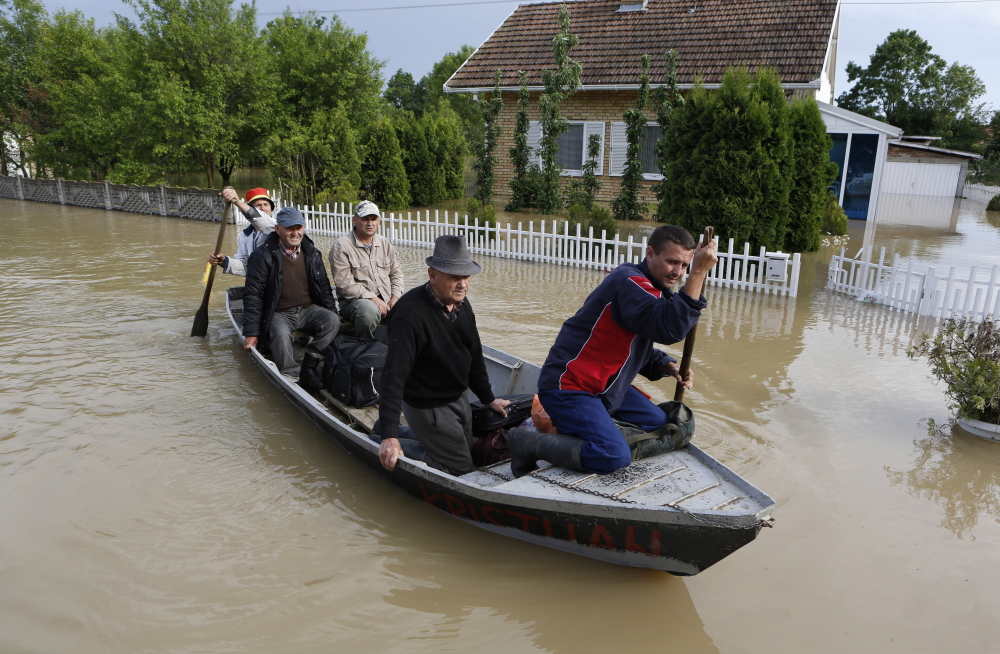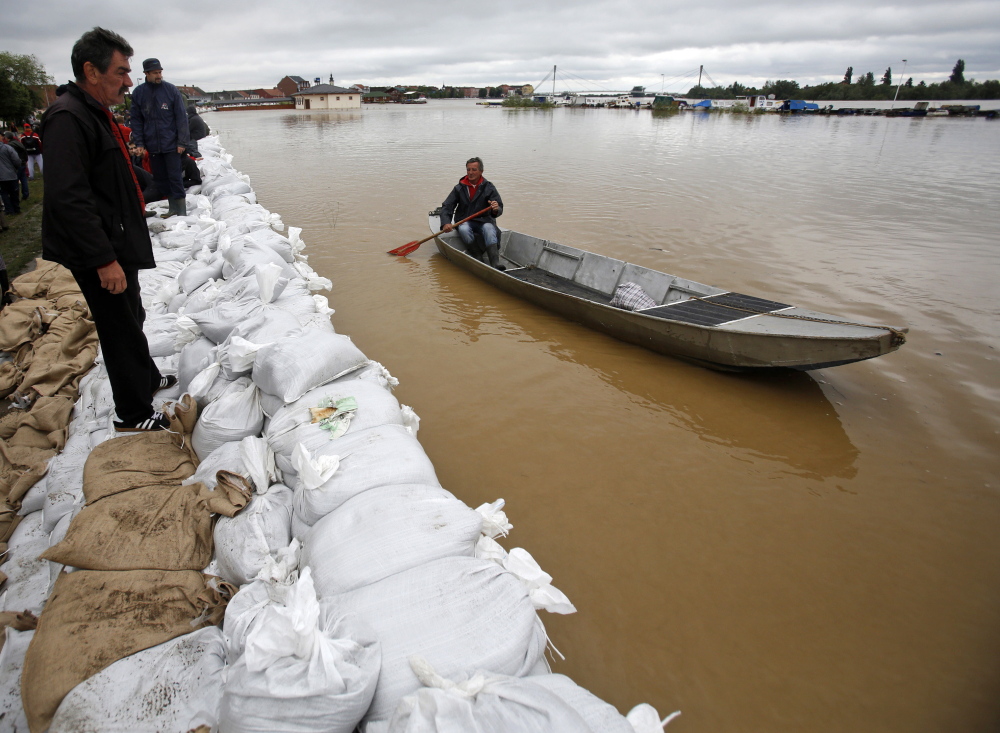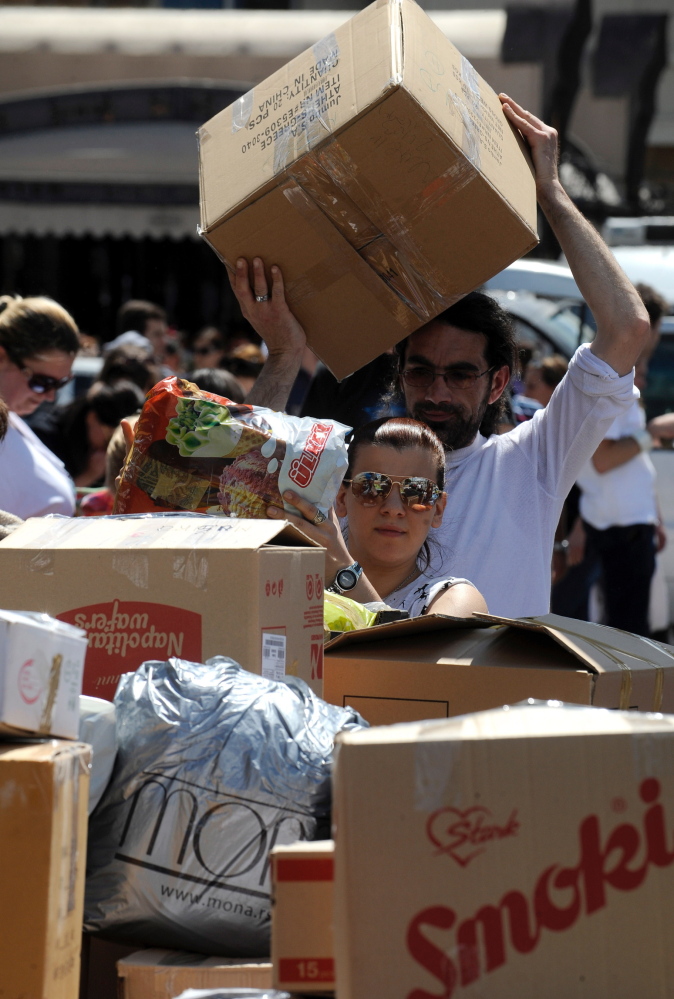BRCKO, Bosnia-Herzegovina — Floodwaters triggered more than 3,000 landslides across the Balkans on Sunday, laying waste to entire towns and villages and disturbing land mines leftover from the region’s 1990s war.
The Balkans’ worst flooding since record-keeping began 120 years ago forced tens of thousands of people from their homes and threatened to inundate Serbia’s main power plant, which supplies electricity to a third of the country and most of the capital, Belgrade.
Authorities organized a frenzied helicopter airlift to get terrified families to safety before the water swallowed up their homes. Many were plucked from rooftops.
Floodwaters receded Sunday in some locations, laying bare the full scale of the damage. Elsewhere, emergency management officials warned that the water would keep rising into Sunday night.
“The situation is catastrophic,” Bosnia’s refugee minister, Adil Osmanovic said after three months’ worth of rain fell on the region in three days. At least two dozen people have died, with more casualties expected.
The rain caused an estimated 2,100 landslides that covered roads, homes and whole villages throughout hilly Bosnia. Another 1,000 landslides were reported in neighboring Serbia.
The cities of Orasje and Brcko in northeast Bosnia, where the Sava River forms the natural border with Croatia, were in danger of being overwhelmed. Officials in Brcko ordered six villages to be evacuated.
Rescuers urged people to go to the balconies or rooftops of their houses with bright fabric to make themselves visible.
In Serbia, where floods have inundated towns and villages, authorities braced for high water that could last for several more days.
Serbian Prime Minister Aleksandar Vucic said Sunday that 12 bodies have been found so far in Obrenovac, site of the coal-fired Nikola Tesla power plant, Serbia’s biggest.
Parts of the plant and a nearby mine that provides its fuel were underwater.
Serbia’s state power company, EPS, said crews were doing all they could to prevent any further damage to the plant. Damage to the mine alone is estimated at more than $137 million.
The floods and landslides raised fears about the estimated 1 million land mines planted during Bosnia’s 1992-95 war. Nearly 120,000 of the unexploded devices remain in more than 9,400 carefully marked minefields. But the weather toppled warning signs and, in many cases, dislodged the mines themselves.
Beyond the immediate danger to Bosnians, any loose mines could also create an international problem if floodwaters carry the explosives downstream. Experts warned that mines could travel through half of southeast Europe or get stuck in the turbines of a hydroelectric dam.
The hillside village of Horozovina was practically split in two by a landslide that swallowed eight houses. Residents told stories of narrow escapes from injury or death.
“I am homeless. I have nothing left, not even a toothpick,” Mesan Ikanovic said. “I ran out of the house barefoot, carrying children in my arms.”
Send questions/comments to the editors.





Success. Please wait for the page to reload. If the page does not reload within 5 seconds, please refresh the page.
Enter your email and password to access comments.
Hi, to comment on stories you must . This profile is in addition to your subscription and website login.
Already have a commenting profile? .
Invalid username/password.
Please check your email to confirm and complete your registration.
Only subscribers are eligible to post comments. Please subscribe or login first for digital access. Here’s why.
Use the form below to reset your password. When you've submitted your account email, we will send an email with a reset code.